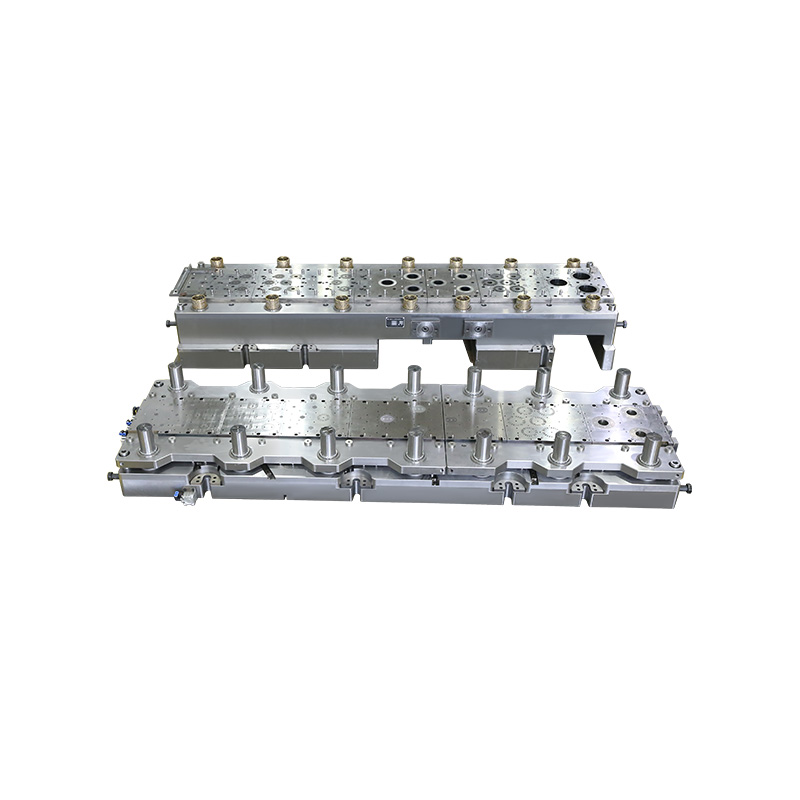 2025.05.16
2025.05.16
 Industry News
Industry News
In an age where market demands shift rapidly and personalization is no longer a luxury but an expectation, manufacturers are rethinking their approach to production. The transition from traditional mass production to a more agile, responsive model is no longer just an industry trend—it’s becoming a competitive necessity. At the heart of this transformation lies a seemingly unsung hero: the high speed stamping mold.
For decades, the high speed stamping mold has been central to high-volume manufacturing, particularly in automotive, electronics, and appliance sectors. Known for its ability to deliver precision at scale, this technology has been associated with the rigid, repetitive nature of mass production. But today, the high speed stamping mold is evolving—becoming smarter, faster, and more adaptable to the flexible demands of modern custom manufacturing.
Shifting Demands Require Faster, Smarter Tooling
Manufacturing used to be about producing as many identical units as possible, as quickly as possible. But with the rise of product differentiation, smaller batch sizes, and shorter product lifecycles, the game has changed. Now, production systems must be able to pivot swiftly and cost-effectively without sacrificing quality.
This is where the high speed stamping mold steps in. Traditionally valued for throughput, its new-generation variants are optimized for versatility. Modern high speed stamping mold designs integrate modular components and quick-change features, allowing manufacturers to switch between product variants with minimal downtime.
“Speed remains a priority,” says Kevin Zhou, a tooling engineer at a precision components firm. “But today, the conversation is also about how a high speed stamping mold can help us move from one configuration to another in minutes instead of hours.”
Precision Meets Flexibility
The advancements in high speed stamping mold technology go beyond mere speed. Manufacturers are now pushing the envelope with precision micro-stamping, complex part geometries, and even multi-material capabilities. These features support the growing trend of hybrid products and parts that blend both aesthetics and function.
Moreover, digitization has brought predictive maintenance and real-time feedback into the picture. Sensors embedded within the high speed stamping mold can now monitor wear, misalignment, and heat buildup, sending instant alerts to operators and minimizing unplanned downtime.

Empowering Customization at Scale
One of the major benefits of modern high speed stamping mold systems is the ability to support low-volume, high-mix production without driving up costs. This is particularly beneficial in sectors like consumer electronics and medical devices, where product customization is both a value-add and a market expectation.
A high speed stamping mold can now be programmed and adjusted with minimal manual intervention, making it ideal for rapid prototyping and short production runs. “We’re producing five variants of the same part for different regions, each with slight spec differences,” says Angela Wu, operations manager at a mid-sized electronics firm. “Thanks to our new high speed stamping mold, we handle all variants on a single press line with near-zero switchover time.”
Sustainability Through Efficiency
Efficiency is not just about productivity—it also ties directly to sustainability. A well-designed high speed stamping mold minimizes material waste, reduces energy consumption, and extends the lifecycle of both the mold and the stamping machinery.
With rising pressures to meet environmental goals, manufacturers are turning to high speed stamping mold systems that support closed-loop recycling and material optimization. Many molds are now designed with life-cycle serviceability in mind, further reducing the environmental footprint.
Looking Ahead
As smart factories become the norm and data-driven operations replace traditional workflows, the high speed stamping mold will play an increasingly critical role. Its integration with automation, AI, and IoT platforms is already underway, opening the door to self-adjusting molds that can respond to process feedback in real time.
While the industrial landscape continues to shift, one thing is clear: the high speed stamping mold is no longer just a tool for mass production. It is an enabler of agile, scalable, and sustainable manufacturing.
From crafting millions of identical units to creating small batches of customized parts, the high speed stamping mold is redefining what’s possible on the shop floor. In this new era, adaptability isn’t just a feature—it’s the foundation. And with the right high speed stamping mold, manufacturers are more prepared than ever to meet the challenge.